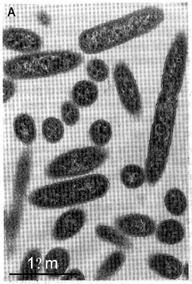Carbon Sequestration Sphingopyxis alaskensis, strain RB2256 T (Bacteria: Proteobacteria: Alphaproteobacteria: Sphingomonadales: Sphingomonadaceae): 3.2Mb genome; Marine heterotroph numerically abundant at ocean sampling sites; oligotrophic waters; 4-10 ° C; ultramicrobacterium (cell volume less than 0.1 m m 3 ); amenable to laboratory experimentation growing in liquid and on solid medium. FULL DESCRIPTION There are global consequences for these microbial processes since the downward flow of particles is the most efficient means of transporting CO 2 fixed by primary production to marine sediments, thus sequestering it from the atmosphere. The balance between particle degradation, regenerating CO 2 via respiration, and burial, is a critical factor affecting climate change, and increases in ocean oligotrophy are forceast as a consequence of global warming. It is therefore important to increase our understanding of the genetic make-up and eco/physiology of the important classes of marine bacteria. Gaining this understanding is critical for future predictive modelling of interdependent marine ecosystems, ranging from phytoplankton to fish and whales. S. alaskensis Characteristics that promote S. alaskensis as a model oligotroph include a constant ultramicro-size (<0.1 µm 3 ), irrespective of whether it is growing or starved, that provides it with a mechanism for avoiding predation, and a high surface to volume ratio to enhance nutrient uptake. This is coupled with the ability to utilize low concentrations of nutrients using high affinity, broad specificity uptake systems ( e.g. highest reported rates of alanine transport for any bacterium) and the ability to simultaneously take up mixed substrates. Based on the Michaelis-Menten constants for substrate transport (K t ) and the available concentrations of mixed amino acids in the ocean, S. alaskensis is predicted to have an in situ doubling time equivalent to experimentally determined doubling times for microorganisms in oligotrophic waters. Its abundance at the time of sampling and geographical distribution, indicates that it is likely to be an important contributor in terms of biomass and nutrient cycling in marine environments. Importantly, S. alaskensis is amenable to laboratory experimentation growing in liquid and on solid medium, in a wide-range of culture media, and using batch (nutrient excess) and chemostat (nutirent limitation) cultivation. Proteomic, genetic and biochemical methods have been established for probing its physiology. Ultramicrobacteria (nanobacteria), such as S. alaskensis, have been reported in a range of aquatic, terrestrial and clinical samples, and in fossils; many of which are controversial. The reports have raised questions about the minimum size of a free-living cell. The astrobiology community has been particularly interested, as the minimum cell-size has important implications for cellular evolution and for the search for extraterrestrial life. S. alaskensis is a useful model for these purposes, as it has been shown, for example, to achieve maximum rates of growth with 200 ribosomes per cell. Importantly, S. alaskensis is amenable to laboratory experimentation growing in liquid and on solid medium, in a wide-range of culture media, and using batch (nutrient excess) and chemostat (nutirent limitation) cultivation. Proteomic, genetic and biochemical methods have been established for probing its physiology.
|
||
|
||
Sphingopyxis alaskensis RB2256

